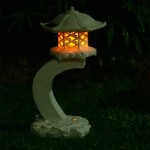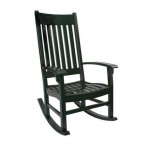Growing Bamboo Plants Outdoors: An Essential Guide
Bamboo, a captivating addition to any outdoor space, is renowned for its graceful stalks, lush foliage, and versatile nature. Whether you desire a stunning privacy screen, a tranquil accent plant, or a drought-tolerant groundcover, bamboo offers a myriad of possibilities. To cultivate thriving bamboo plants outdoors, follow these essential guidelines:
Site Selection and Soil Preparation:
Bamboo thrives in well-drained, fertile soil. Select a site that receives ample sunlight or partial shade and protects it from strong winds. Amend the soil with compost or manure to improve its nutrient content and drainage capacity.
Planting and Spacing:
Bamboo plants are typically sold in containers or as bare-root stock. Dig a hole twice the width of the container and deep enough to accommodate the root ball. Place the bamboo plant in the hole, backfill with soil, and tamp down gently. Water thoroughly after planting. Space bamboo plants according to their intended use and growth habits.
Watering:
Bamboo requires consistent watering, especially during establishment and hot weather. Water deeply and regularly, allowing the soil to dry out slightly between waterings. Mulching around the base of the plants helps retain moisture and suppress weeds.
Fertilizing:
Fertilize bamboo plants monthly during the growing season with a balanced fertilizer. Use a fertilizer high in nitrogen to promote healthy foliage and bamboo shoot production.
Pruning:
Pruning is essential for maintaining the health and appearance of bamboo plants. Remove dead or damaged canes each spring and cut back overgrown canes to the ground. Thin the bamboo grove by removing excess canes to ensure proper air circulation and sunlight penetration.
Pest and Disease Management:
Bamboo is relatively pest-resistant, but it can be affected by aphids, mealybugs, and scale insects. Use insecticidal soap or neem oil to control these pests. Bamboo plants are also susceptible to fungal diseases, such as bamboo smut. Remove infected canes and treat the plant with a fungicide if necessary.
Winter Care:
Protect bamboo plants from cold temperatures by mulching heavily around the base of the plants. In extremely cold climates, consider covering the bamboo with a frost blanket or tarpaulin. Container-grown bamboo plants should be moved indoors or placed in a sheltered area during winter.
Conclusion:
Growing bamboo plants outdoors is a rewarding experience that can enhance the beauty and functionality of any landscape. By following these essential guidelines, you can cultivate thriving bamboo plants that will bring joy and tranquility to your outdoor space for years to come.
Outdoor Bamboo Plants For Growing Guide Trees Com

How To Plant And Care For Bamboo Outdoors

How To Plant And Care For Bamboo Outdoors

Golden Bamboo For Growing Guide Trees Com

Outdoor Plant A Guide To Growing The Golden Bamboo

Modernize Your Garden How To Grow Bamboo The Glove

Outdoor Bamboo Plants For Growing Guide Trees Com

Bamboo Plant Get To Know It Before You Grow

Modernize Your Garden How To Grow Bamboo The Glove

Growing Bamboo A Complete Guide For Gardens Bouqs Blog








